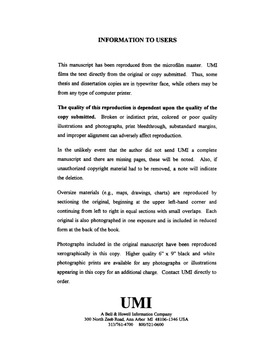| dc.contributor.advisor | Droegemeier, Kelvin, | en_US |
| dc.contributor.advisor | Shapiro, Alan, | en_US |
| dc.contributor.author | Weygandt, Stephen Scott. | en_US |
| dc.date.accessioned | 2013-08-16T12:30:07Z | |
| dc.date.available | 2013-08-16T12:30:07Z | |
| dc.date.issued | 1998 | en_US |
| dc.identifier.uri | https://hdl.handle.net/11244/5674 | |
| dc.description.abstract | Following the velocity blending and adjustment steps, the thermodynamic retrieval is applied to both the single- and dual-Doppler derived wind fields, yielding realistic looking and qualitatively similar perturbation potential temperature fields. An analysis of the terms in the vertical momentum equation is performed to document their contribution to the retrieved potential temperature. Moisture fields are then specified and short-range numerical forecasts are launched from both the Single-and dual-Doppler-derived fields. In both cases, the general storm evolution and deviant storm motion are reasonably well predicted for a period of about 35 minutes. Sensitivity experiments indicate that the predicted storm evolution is strongly dependent on the initial moisture fields, with rainwater exerting the greatest influence. | en_US |
| dc.description.abstract | For the SDVR, Shapiro's two-scalar technique is adapted for use on deep convective storms by applying it in a moving reference frame. Two possible moving reference frames (both calculated from the radar data) are tested: one that follows the storm motion and one that follows the mean wind. Verification of the retrieved wind field against a corresponding dual-Doppler analysis indicates significantly improved results for both moving reference frames compared with the fixed frame. | en_US |
| dc.description.abstract | In this study, I develop a new single-Doppler analysis/retrieval procedure and apply it to a real-data case of an Oklahoma supercell thunderstorm. The new method features the sequential application of a single-Doppler velocity retrieval (SDVRI) and a Gal-Chen type thermodynamic retrieval. These two main retrieval components are augmented by a wind blending procedure, a variational wind adjustment, and a simple method for specifying moisture fields. | en_US |
| dc.format.extent | xix, 257 leaves : | en_US |
| dc.subject | Radar meteorology. | en_US |
| dc.subject | Physics, Atmospheric Science. | en_US |
| dc.subject | Doppler radar. | en_US |
| dc.subject | Thunderstorm forecasting Oklahoma. | en_US |
| dc.title | The retrieval of initial forecast fields from single Doppler observations of a supercell thunderstorm. | en_US |
| dc.type | Thesis | en_US |
| dc.thesis.degree | Ph.D. | en_US |
| dc.thesis.degreeDiscipline | School of Meteorology | en_US |
| dc.note | Advisers: Kelvin Droegemeier; Alan Shapiro. | en_US |
| dc.note | Source: Dissertation Abstracts International, Volume: 59-07, Section: B, page: 3503. | en_US |
| ou.identifier | (UMI)AAI9839808 | en_US |
| ou.group | College of Atmospheric & Geographic Sciences::School of Meteorology | |
